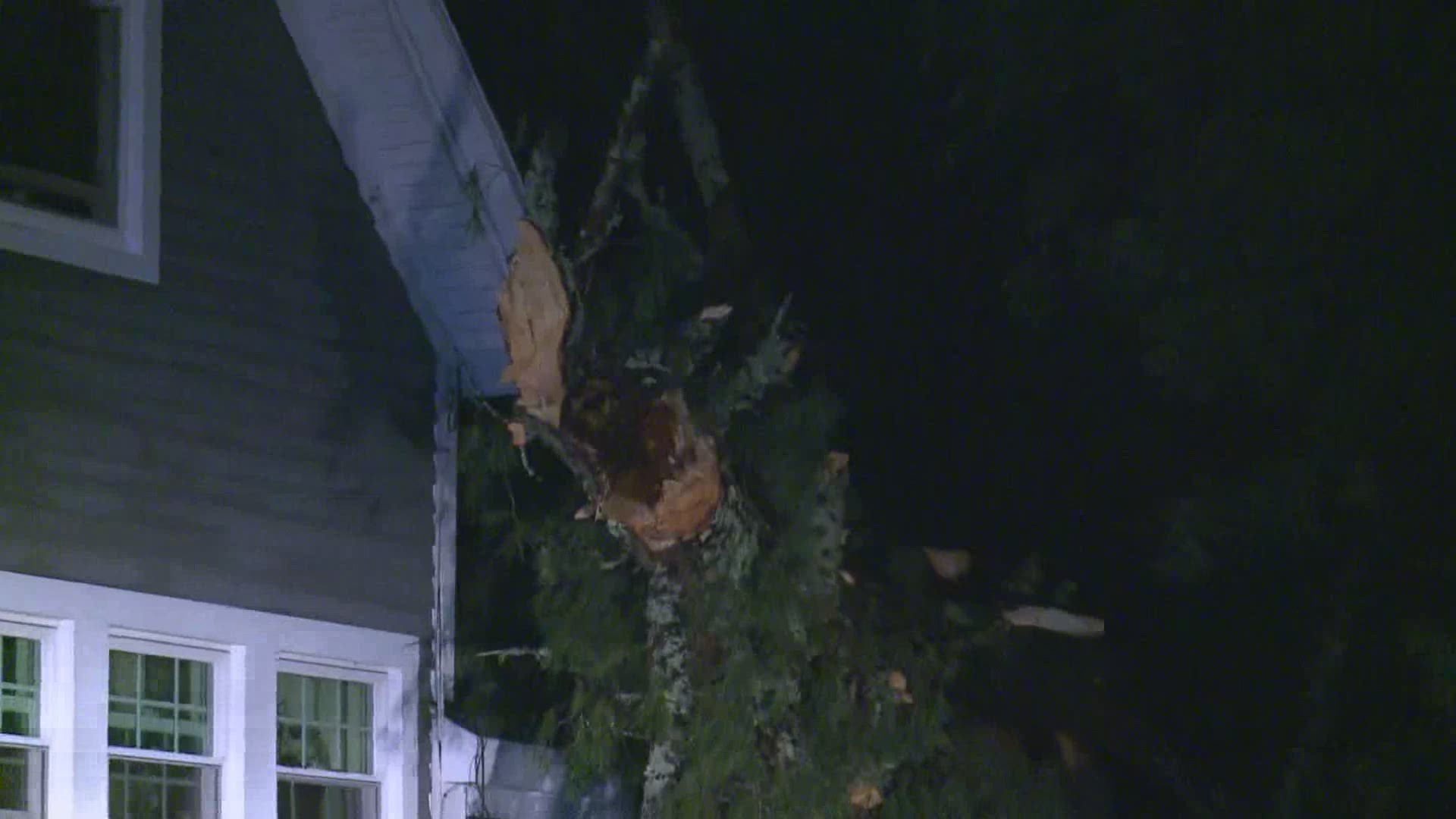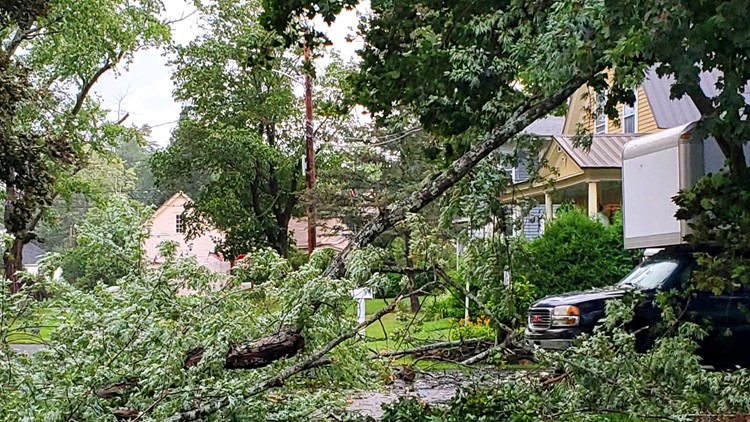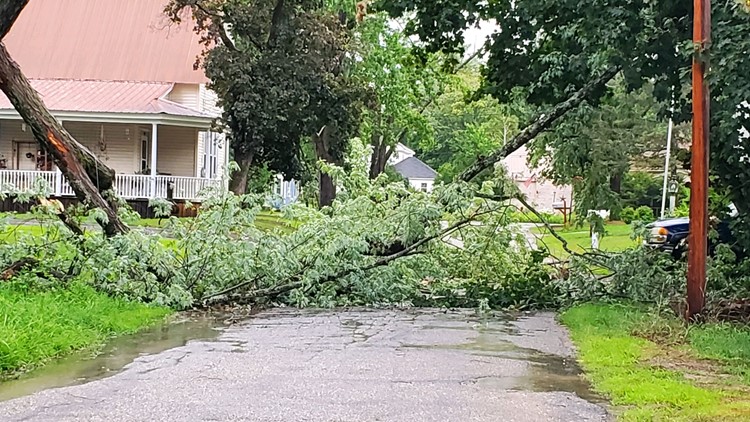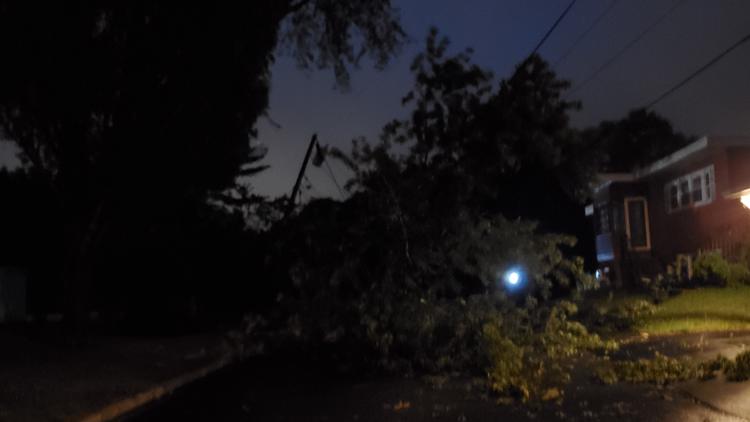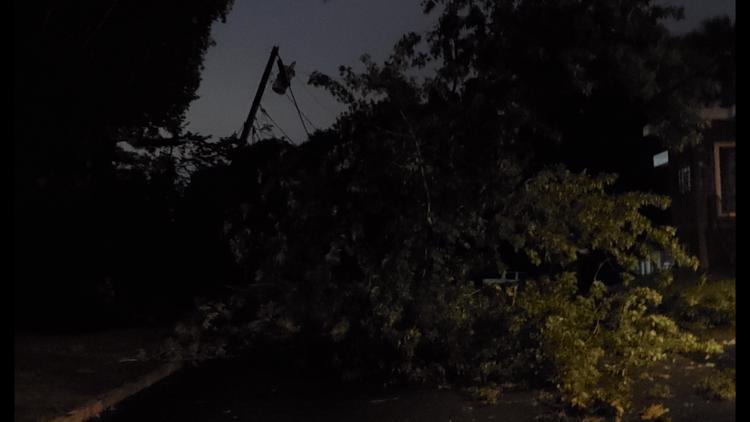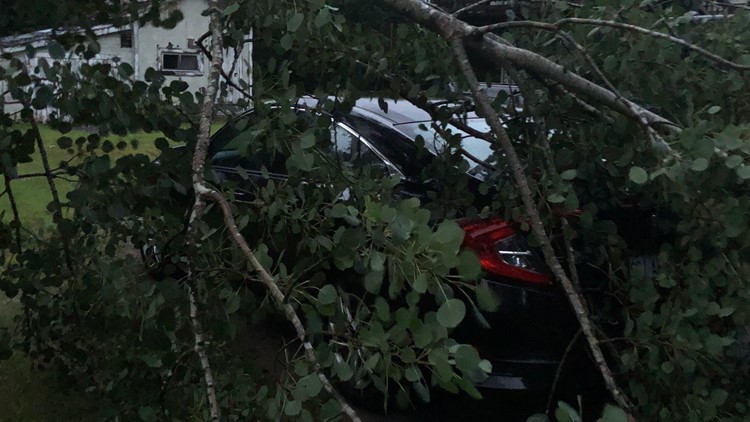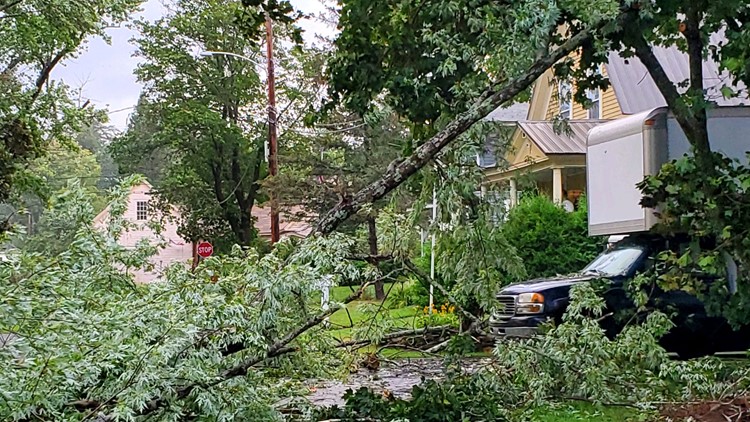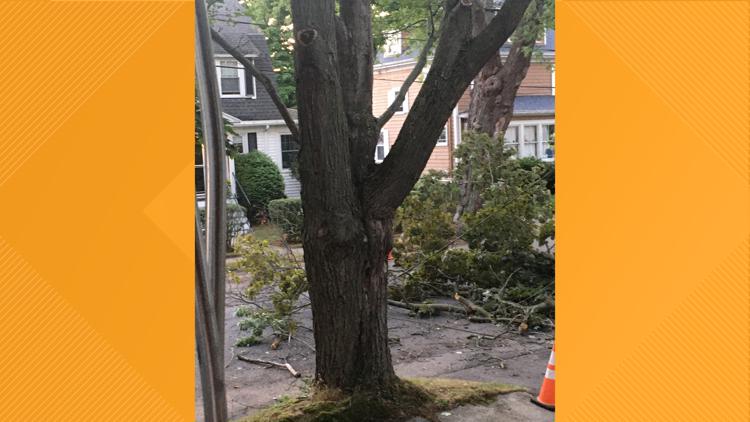MAINE, USA — Strong wind gusts from Tropical Storm Isaias dropped tree limbs and caused power outages across Maine Tuesday night. Some of the strongest gusts in Maine were reported to be in the 40-50 mph range.
The Department of Agriculture, Conservation and Forestry's Maine Forest Service (MFS) is reminding everyone involved in storm cleanup to please be safe and also help keep Maine's forests healthy.
After power and other utilities have been restored, property owners will be faced with the issue of what to do with storm-damaged trees. Project Canopy, a program of the MFS, offers the following tips and guidance to property owners faced with questions about what to do with downed trees, limbs, and branches:
- Trees and branches on homes and around power lines — Homeowners need to find immediate solutions for trees and branches on their homes. Branches and trees on power lines should be dealt with by calling local power companies. Even if a hanging limb is clear of power and utility wires, homeowners should rely on professionals to assess the severity of the damage before trying to repair or remove the branch.
- Injured trees requiring climbing or chainsaw work — Call a licensed arborist for help. Arborists are tree care professionals who are trained to assess and correct storm-damaged trees. They also have the experience needed to diagnose how much of a tree can or should be saved. Homeowners should be wary of those offering fly-by-night, emergency tree-cutting services. Always ask for proof of licensing, insurance, and work references. Find more information about working with arborists in Maine.
PHOTOS: Tropical Storm Isaias hits Maine
The Maine Forest Service is also reminding Mainers that the woody debris created by storm damage may harbor insects or diseases that are harmful to Maine forests. Moving that debris long distances can spread pests to new areas. Be aware that there are rules, known as quarantines, that impact transport of some woody storm debris:
- Movement of ash from areas within the Emerald Ash Borer Regulated Area. The restriction in this case extends to mixed hardwood chips.
- Movement of Larch from areas within the European Larch Canker quarantine.
- Movement of Hemlock branch/top material from areas within the Hemlock Woolly Adelgid quarantine.
You can learn more about quarantines that affect woody storm debris HERE.
If you suspect you've found damage from an invasive insect such as emerald ash borer or Asian longhorned beetle, the Maine Forest Service asks that you please take photos and report it HERE.

